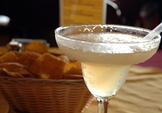About Señor Fiesta and reviews
Reviews:
compliancedana
The food was not bad but not great. However considering the area, I was surprised. However, the waitress staff were nice, but clueless when it came to providing ample plates to put food on - for example- ordered a fajita dish that came with three...
Traveler2541
This is your typical Tex-Mex restaurant. Cheese dip and nachos are good. The biggest issue with this place is the food never seems to be served hot especially the steak and chicken. It's always lukewarm.
DBM58
We have been going to this restaurant since it opened several years ago, and the food has always been anywhere between pretty good and excellent. Mostly excellent. Great menu, good prices, and for the most part, good service. This was not the case for our...
646lorit
Although this restaurant opened fairly recently, it already has a devoted following. The restaurant was busy when we stopped in with a group for a weekday lunch, but we still got fast service. The food tasted great, with fresh ingredients, large portions, and a reasonable...
timothyeruiz
Stopping by for supper after a long day and it was a busy place. A little too loud but the food makes up for that one shortcoming. The staff was pleasant as well. Try to pollo jalisco! Awesome!
295mikej
To me this was just an average Mexican food restaurant. The food wasn't any better or worse than dozens of other similar restaurants. One big negative was that it was so loud inside you couldn't hear the servers or even have a normal conversation.
SteveAG_12
recently moved to area and found that this location is the orginal .we have eaten at the #2 located i kroger plaza previously with daughters family .I prefer the #1 over that location. Food was great and house margarita was excellent. prices are great! lots...
daniele3513
Service was great. Food was very well priced and authentic Mexican. I’ll visit this place again! I had the enchiladas verde. Sauce was good, food was warm.
collinr6
Loved the food, great service! Very accomidating for our two young children. Best customer service I have had in a long time. I will be coming here many times in the future.
timothyeruiz
I was impressed by the service and food. Normally you get run of the mill Mexican food that's always good but this place served great dishes! I especially enjoyed the Pollo Jalisco. That's a must when I come back here, and I will. It was...

Senor Fiesta#1
4110 Cleveland Hwy. Clermont Ga. (770) 983-1040LIKE on Facebook for daily specials!







